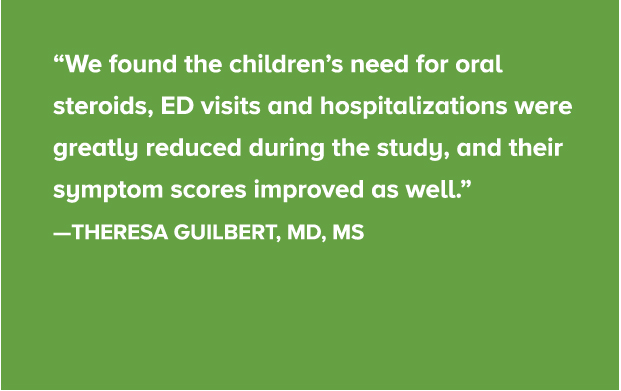Teaming with Schools, Technology to Improve Childhood Asthma

Children and teens who live in inner city areas are especially vulnerable to asthma, and face greater challenges managing the treatment that keeps their asthma in check. With a rate of pediatric asthma in Greater Cincinnati more than twice the national average, doctors here are looking for innovative, sure-fire ways to help these children better manage their disease.
One such undertaking is a telehealth program that partners with inner city schools. Telehealth connects patients and doctors via a Skype-like format. A pilot program that ran in three schools during the 2015–16 school year and enrolled 21 children proved highly successful. The program has now been funded for two years to develop a sustainable pulmonary clinic at school and will include five Cincinnati public schools and as many as 75 participants.
“It started as a program to test telehealth as a medical and self-management intervention with inner city kids in schools,” says Theresa Guilbert, MD, MS, director of the Asthma Center. “We notice in our clinics that these kids have issues with transportation, organization, missing school—they don’t always come to their clinic appointments. So our question was, how can we reach our patients better?”

Guilbert and her team focused on three Cincinnati public schools in neighborhoods where asthma rates were especially high. They enrolled children ages 10 and up. In the pilot program, each child met with an asthma coordinator at school who talked with them about their asthma. They would connect with Guilbert via laptop, she would assess their overall health and adjust medications if necessary. Visits were held monthly for six months. Health psychologist Rachelle Ramsey, PhD, coached children on taking medications regularly. A sensor attached to the students’ inhalers sent reminders when they missed doses. By the end of the school year, participants’ asthma showed significant improvement.
“We found the children’s need for oral steroids, ED visits and hospitalizations were greatly reduced during the study, and their symptom scores improved as well,” says Guilbert. The pilot’s success earned a two-year grant from the Robert C. and Adele R. Schiff Family Foundation to develop the program into a Cincinnati Children’s pulmonary clinic.
Her goals for the new clinic include enrolling more schools and students, and making the program self-sustaining through reimbursement for certain services by the time its two-year funding ends.

